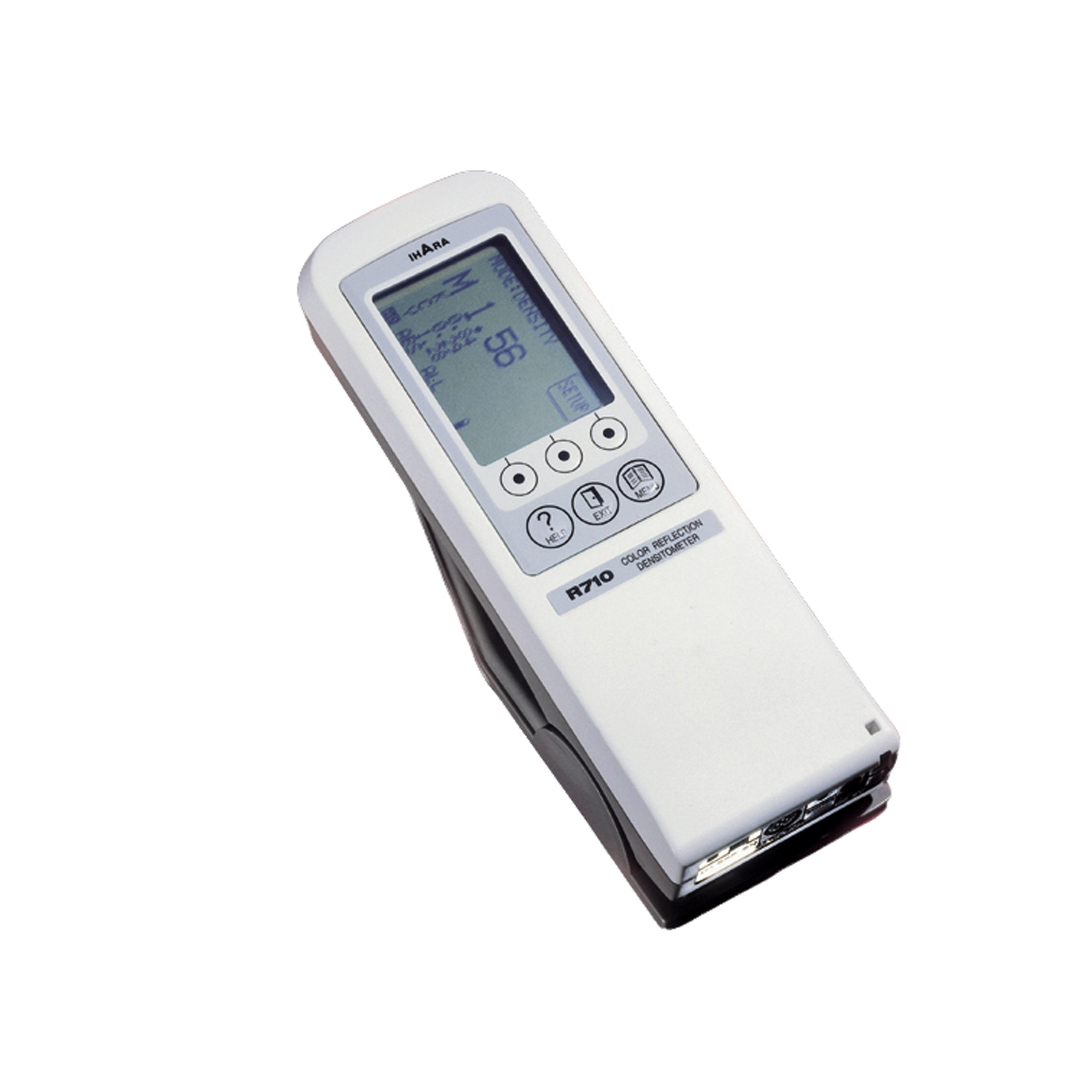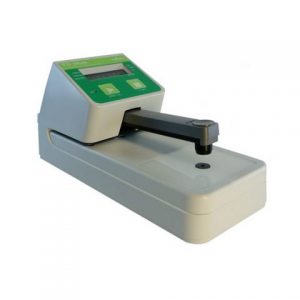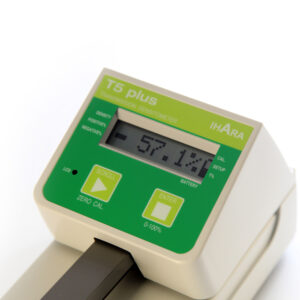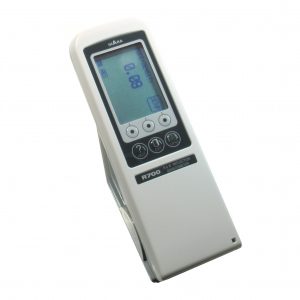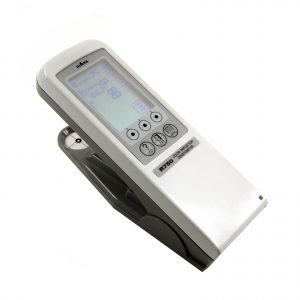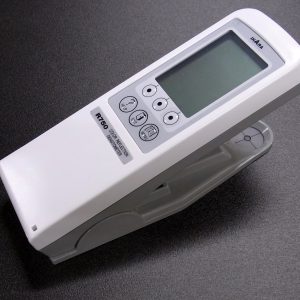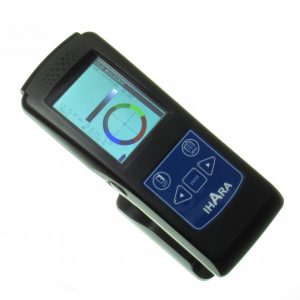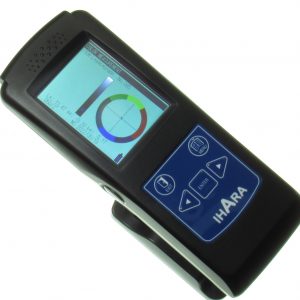R710 Color Reflection Densitometer
Categories
R710 Color Reflection Densitometer
Value & Performance
The model R710 color reflection densitometer utilizes the most advanced technology to ensure great accuracy, inter-instrument, and repeatability. This instrument combines functionality and simple user interface in a small, lightweight design.
The model R710 measures: Density, and Density Difference.
Features:
Simple user interface with self-guiding prompts;
Menu-driven display guides the operator through calibration, set-up, and all measurement functions;
Extremely reliable and requiring little or no maintenance;
Multiple language user interface supported (English, Spanish, Portuguese, French, Italian, German, and Japanese);
Easy and low cost maintenance;
Manufactured in Japan under ISO 9001 certification;
Accessories:
- Operations Manual
- Calibration Standard
- Multi-voltage AC Adapter
- Carrying Case
Warranty: 24-month limited warranty
For a nominal fee, upgrade your R710 to the model R750 by contacting your dealer or IHARA US LLC for more information.
Documentation
| Brochure |
Comparison Chart
Why use a densitometer?
Benefits for the Pressman (Printing Operator):
- Enhanced Color Control: The color reflection densitometer empowers the pressman to monitor and adjust color density levels during the print run. This ensures accurate color reproduction and allows them to make real-time adjustments, leading to consistent and high-quality print output.
- Spot Color Precision: For jobs involving spot colors or custom inks, the densitometer assists the pressman in achieving precise color matching. By measuring the optical density of individual ink patches, the pressman can fine-tune ink levels to match the target values, resulting in spot-on color accuracy.
- Efficient Troubleshooting: When color issues arise, the densitometer serves as a valuable troubleshooting tool. It helps the pressman identify the source of the problem, such as incorrect ink ratios or variations in ink density, enabling quicker corrective actions and minimizing downtime.
- Waste Reduction: Accurate color control reduces the likelihood of color-related reprints, leading to cost savings and reduced material waste. The pressman can minimize ink and paper usage by maintaining optimal color density levels throughout the print job.
Benefits for the Management:
- Quality Assurance: Utilizing a color reflection densitometer ensures consistent color reproduction and adherence to desired color standards. This translates to higher print quality, customer satisfaction, and enhanced brand reputation.
- Cost-Effectiveness: By maintaining color accuracy throughout the print run, the management can reduce the risk of costly reprints and color-related errors, leading to improved efficiency and overall cost-effectiveness.
- Improved Production Efficiency: The densitometer facilitates streamlined color management processes, allowing the press operators to make quick adjustments as needed. This leads to smoother production runs and faster turnaround times for printing jobs.
- Enhanced Customer Relations: Meeting precise color requirements consistently instills confidence in customers. With a densitometer, the management can assure clients of accurate color reproduction and deliver prints that meet or exceed expectations.
- Data-Driven Decision Making: Densitometer readings provide valuable data on color density, which can be analyzed and used to optimize printing processes. Management can use this information to fine-tune workflows and implement continuous improvements.
- Compliance with Standards: In industries where color accuracy is critical, such as packaging or branding, a densitometer ensures compliance with industry standards and specifications, preventing costly non-compliance issues.
In summary, a color reflection densitometer benefits both the pressman and the management in the printing industry. For the pressman, it aids in achieving precise color control, troubleshooting, and waste reduction. For the management, it enhances quality assurance, cost-effectiveness, production efficiency, and customer relations, while supporting data-driven decision making and compliance with industry standards.
Product Specifications
- Measuring Geometry
- 0°/45° (ANSI PH2.17, ISO 5/4, DIN 16536)
- Filter Response Status
- Status T, Status E, Status A
- Repeatability
- ±0.01D
- Measuring Range
- Density 0.00D – 2.50D
- Accuracy
- ±0.02D
- Light Source
- Halogen Lamp, Approx. 2856°K
- Aperture Diameter
- 3.0mm (1.7mm optional)
- Detector
- GaAsP Photodiode
- Display
- 128 x 64 Dot Graphic LCD
- Power Supply
- Ni-Cad (4.8V), 800mAh
- Recharge Time
- Approximately 1.5 hours
- Measurements per Charge
- Approximately 4,000 (Internal Testing)
- Warm Up Time
- None
- Measuring Time
- Approximately 1 second
- Operating Temp. Range
- 41°F ~ 104°F (5°C ~ 40°C)
- Polarization Filter
- (Optional)
- Security User Code
- (Optional)
- Dimensions
- 2 3/4” W x 2” H x 8 1/4” L (72mm x 50mm x 210mm)
- Weight
- 1.2 lbs. (with batteries) (530 g)
- Computer Output
- Configurable RS-232C Serial Interface

